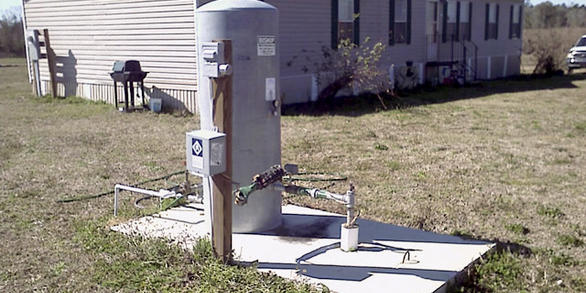
Testing of well water is the first step in the selection of water treatment technology. The result of the test determines each further step in the implementation of the water treatment plant.
Domestic wells
In recent years, domestic water supplies have experienced a renaissance. More and more new-build detached houses are equipped with their own well, even if they have access to the municipal or communal water supply system. These are obviously not the wells we know from our grandparents’ backyards – although we must admit that those had their charm. The basic type of a domestic well, which has been chosen for several years now, is a drilled well. The main advantages of such wells are space saving, greater depth and short construction time.
Regardless of the type of intake, the most important thing is the quality of the water in the house well. In old dug wells, the water that accumulated in the intake had free access to oxygen and often also to sunlight over almost the entire water surface. Contact with ambient air and daylight results in the precipitation from water of easily oxidising compounds such as iron compounds, which transform from the divalent (II) form, soluble in water, to the trivalent (III) form, precipitating from water in the form of sludge. Depending on the content of iron compounds in water and the degree of their precipitation, sludge can cause water to become turbid, change its colour to a brownish-brown, change the smell of water, and in high concentrations it precipitates in the form of flocculent sludge at the bottom of the vessel.
Water analysis
Water quality testing is the first and most important stage of selecting a water treatment system. It is impossible to select an effective water treatment or softening system without a thorough analysis of the raw water carried out in a laboratory. The water quality analysis consists of a physico-chemical test and a microbiological test. From the point of view of the suitability of water for consumption both scopes are very important and neither of them should be omitted. From the point of view of water consumption safety, a microbiological analysis of the water is more important because of the direct and immediate effects of illness which can be caused by consuming contaminated water. Apart from extreme cases of contamination of water with organic compounds, such as pesticides, herbicides or hydrocarbons, heavy metals, such as lead, cadmium or mercury, possible exceedances of physicochemical parameters such as iron, manganese or chlorides do not cause direct health effects. On the contrary, many waters considered to be therapeutic contain iron or sulphur compounds in quantities far exceeding the permissible standards set for drinking water. Their consumption in “reasonable” quantities contributes to improving our health. Therefore, consumption of water from a domestic well with physicochemical parameters exceeding established standards (excluding extreme cases described above) is completely neutral for our organism.
Physicochemical testing of water
The physicochemical examination of water consists of a number of analyzes, the scope of which has been developed in the Regulation of the Minister of Health on the quality of water intended for human consumption. The scope of testing tap water differs from the scope of testing “raw” water from underground intakes. The following spectrum of laboratory analyses is most commonly used for tap water:
Colour
Turbidity
Odour
Conductivity
Taste
pH
Ammonium ion
Nitrites
Nitrates
Iron
Manganese
Free chlorine (if the water is disinfected with chlorine or its compounds)
Total amount of chlorate and chlorite (if the water is disinfected with chlorine dioxide)
Aluminium (if its compounds are used as coagulant or if of natural origin)
For groundwater (raw water) the scope of investigation is extended to the following parameters:
Chlorides
Sulphates
Oxidisability with KMnO4 (permanganate index)
Total calcium and magnesium content (water hardness).
Microbiological testing of water
The microbiological test of the water gives us information about the microbial colonization of the water intake. Determined parameters constitute a group of the so-called indicator bacteria, the presence or quantity of which indicates the occurrence of undesirable phenomena in the examined well (e.g. percolation of subsoil water or a permanent infection of the intake.) The spectrum of microbiological testing of water from a domestic intake usually includes parameters:
Total microorganisms at 22°C after 72h
Coliform bacteria
Escherichia coli
Enterococcus faecalis
water testing is often extended to include Pseudomonas aeruginosa and Staphylococcus aureus.
